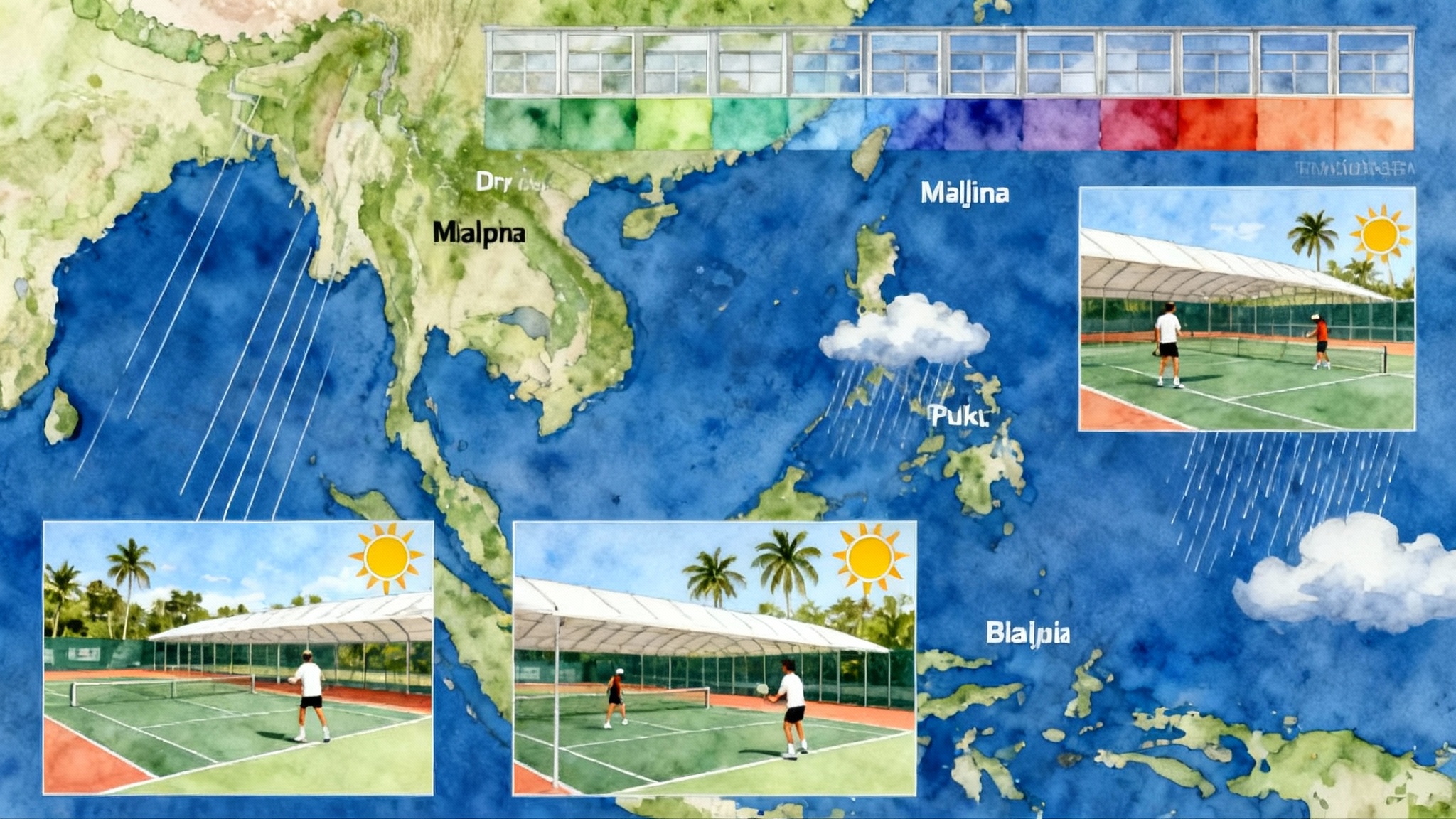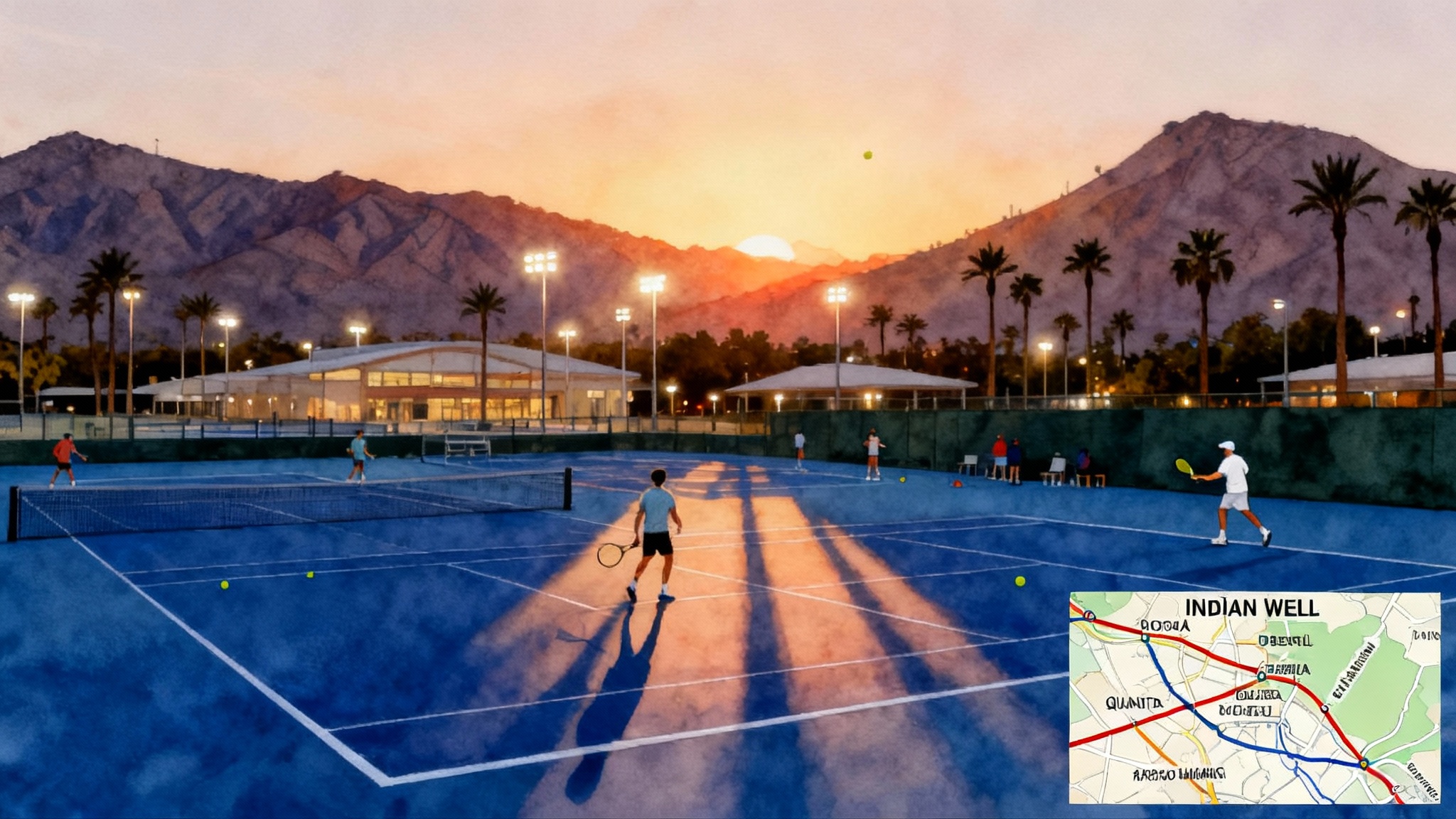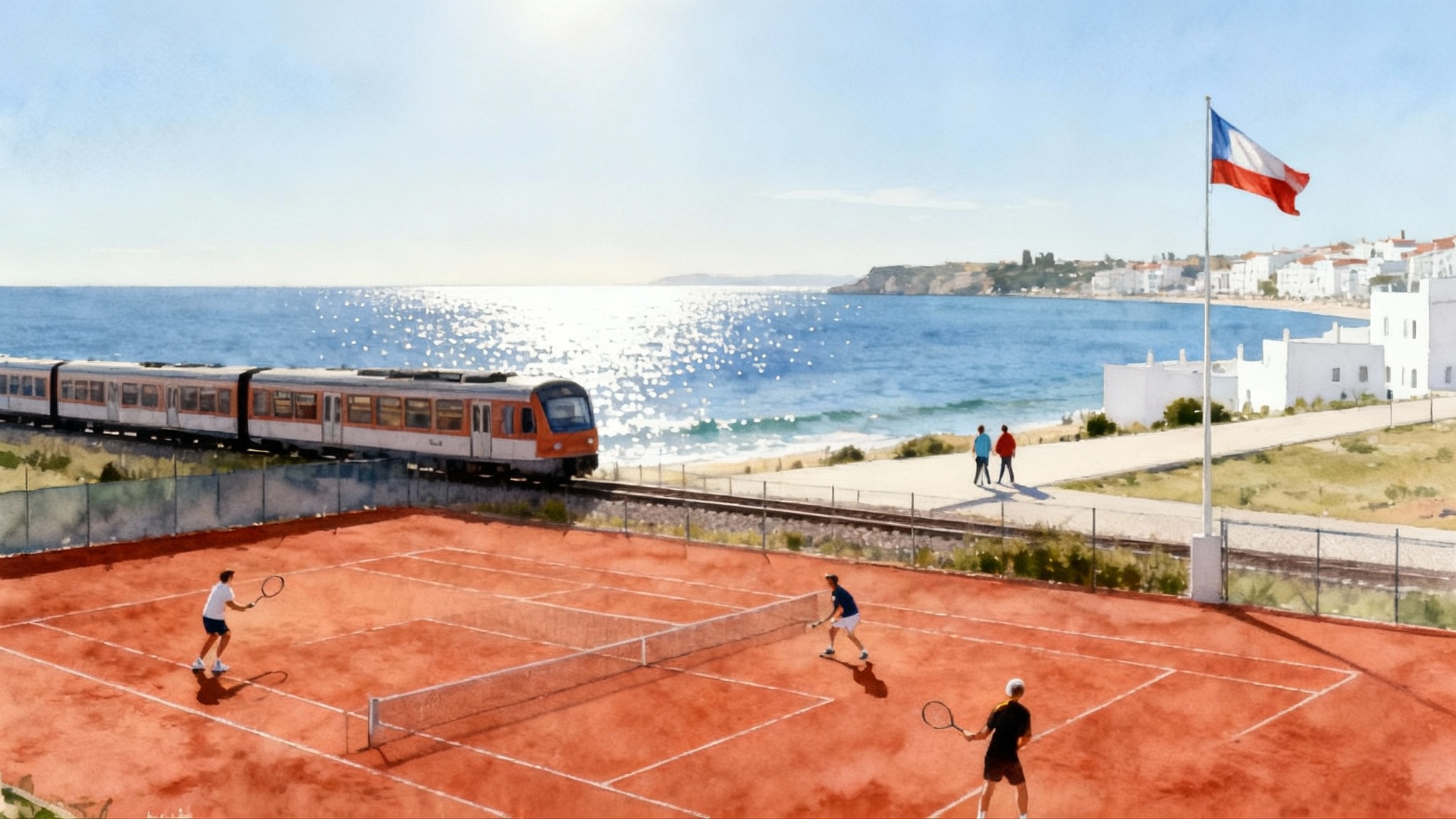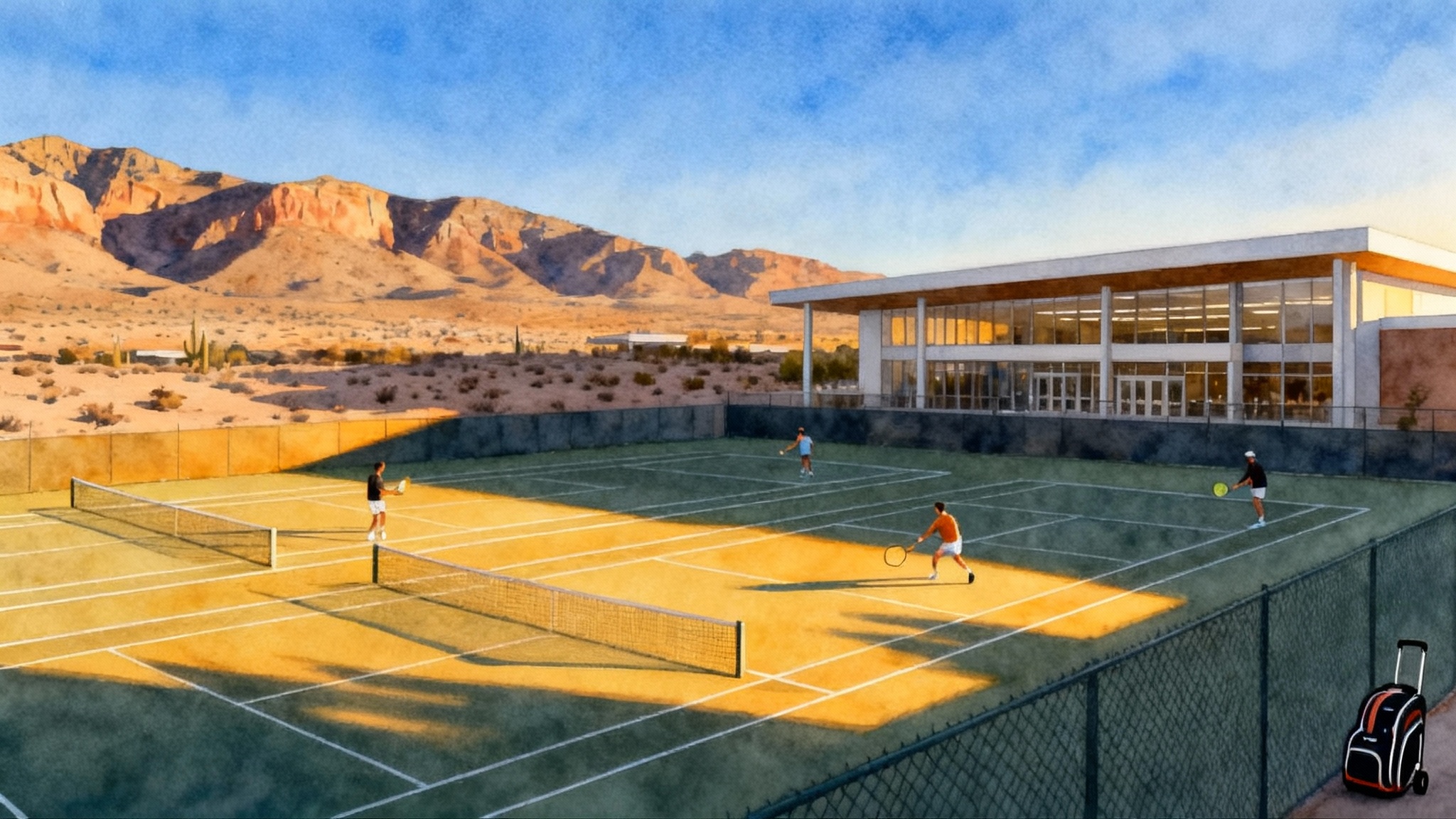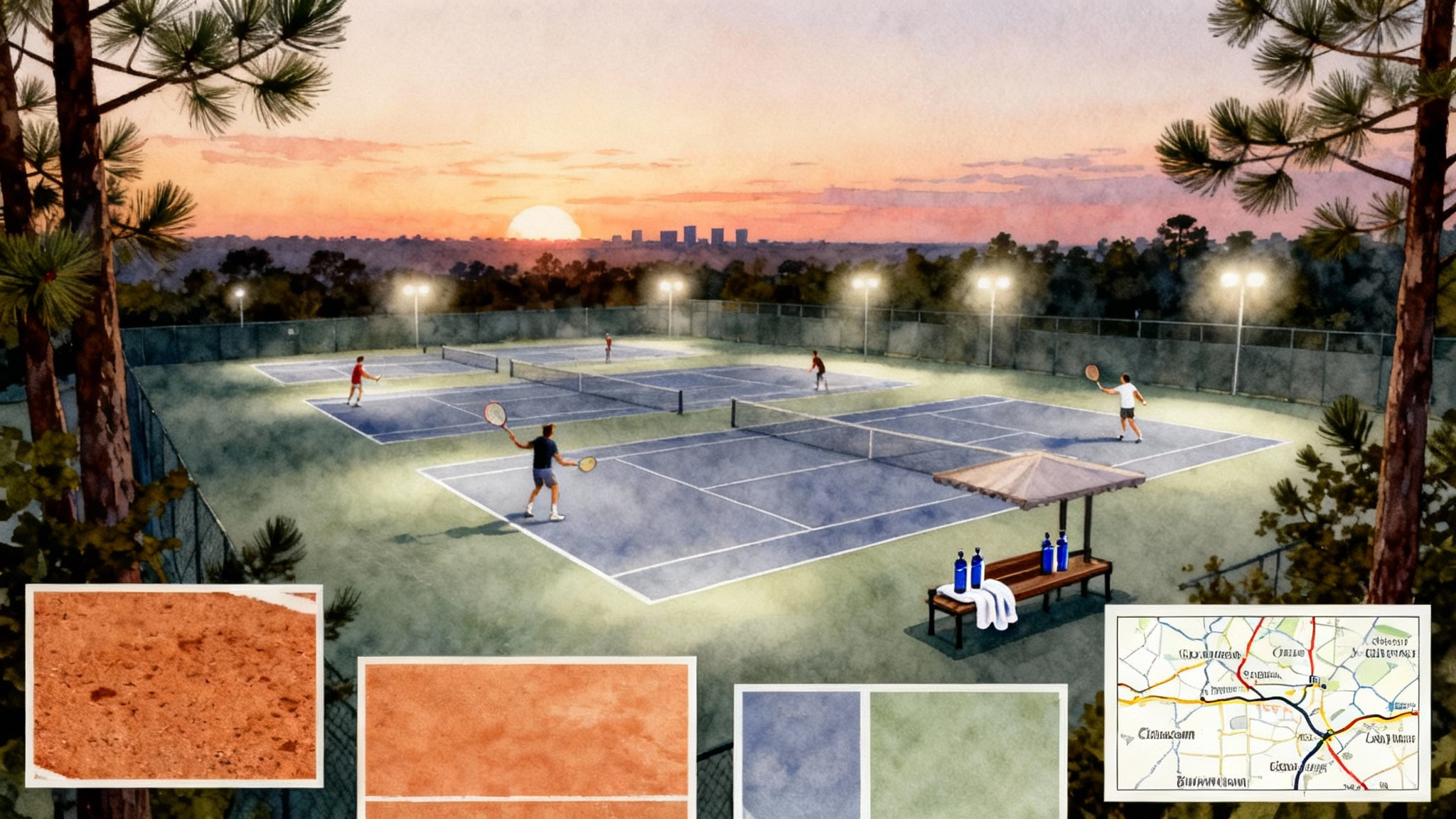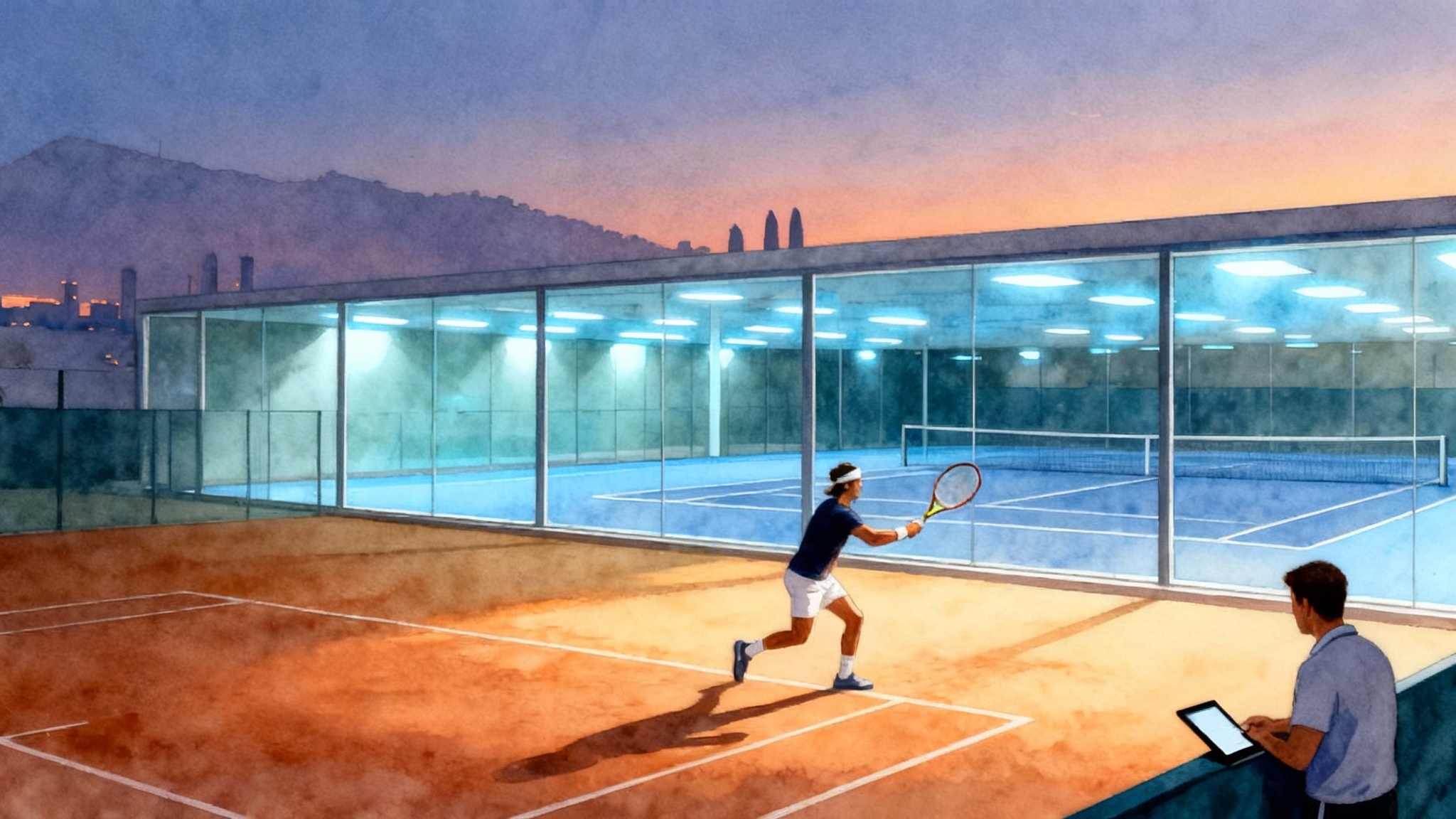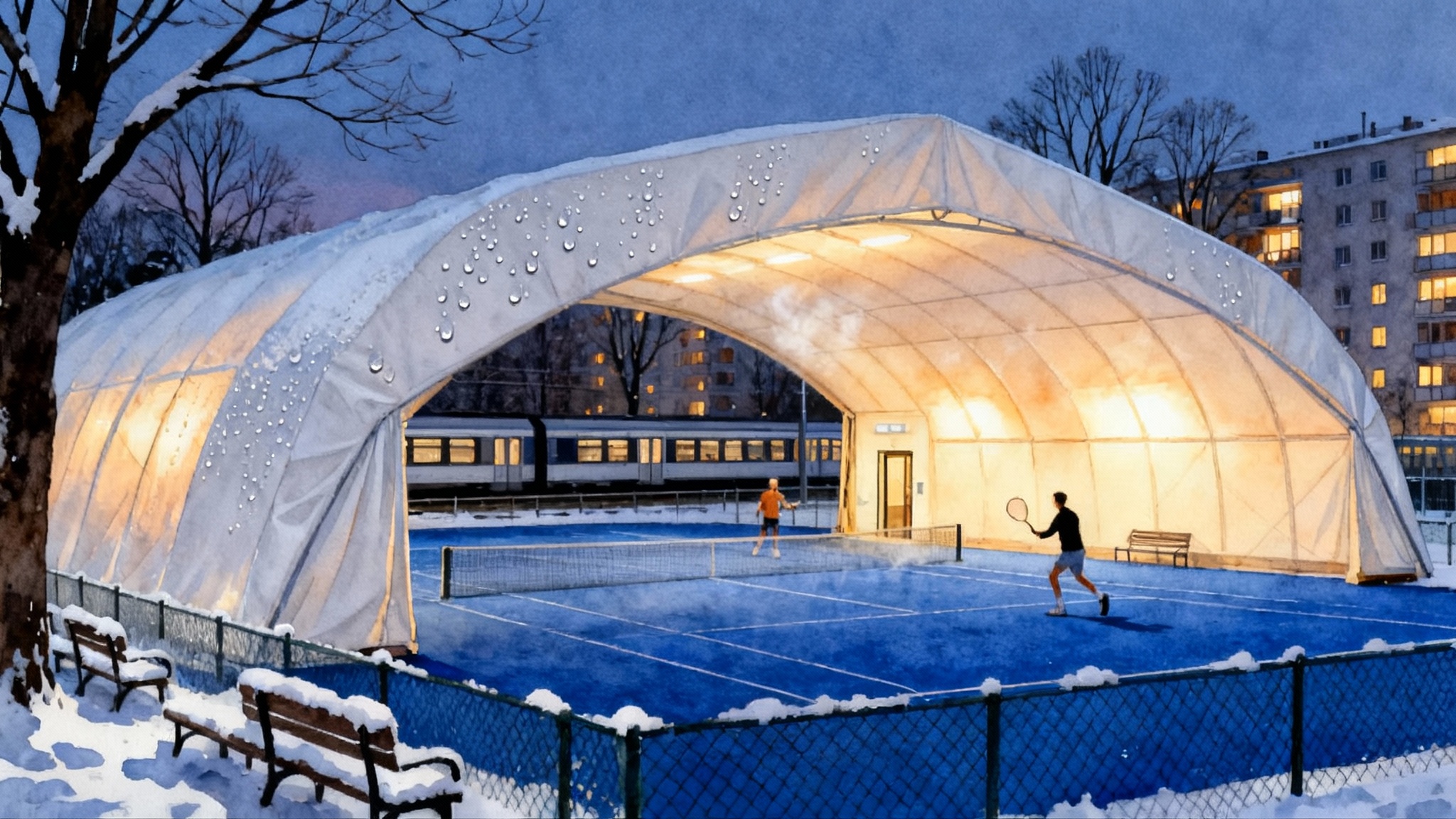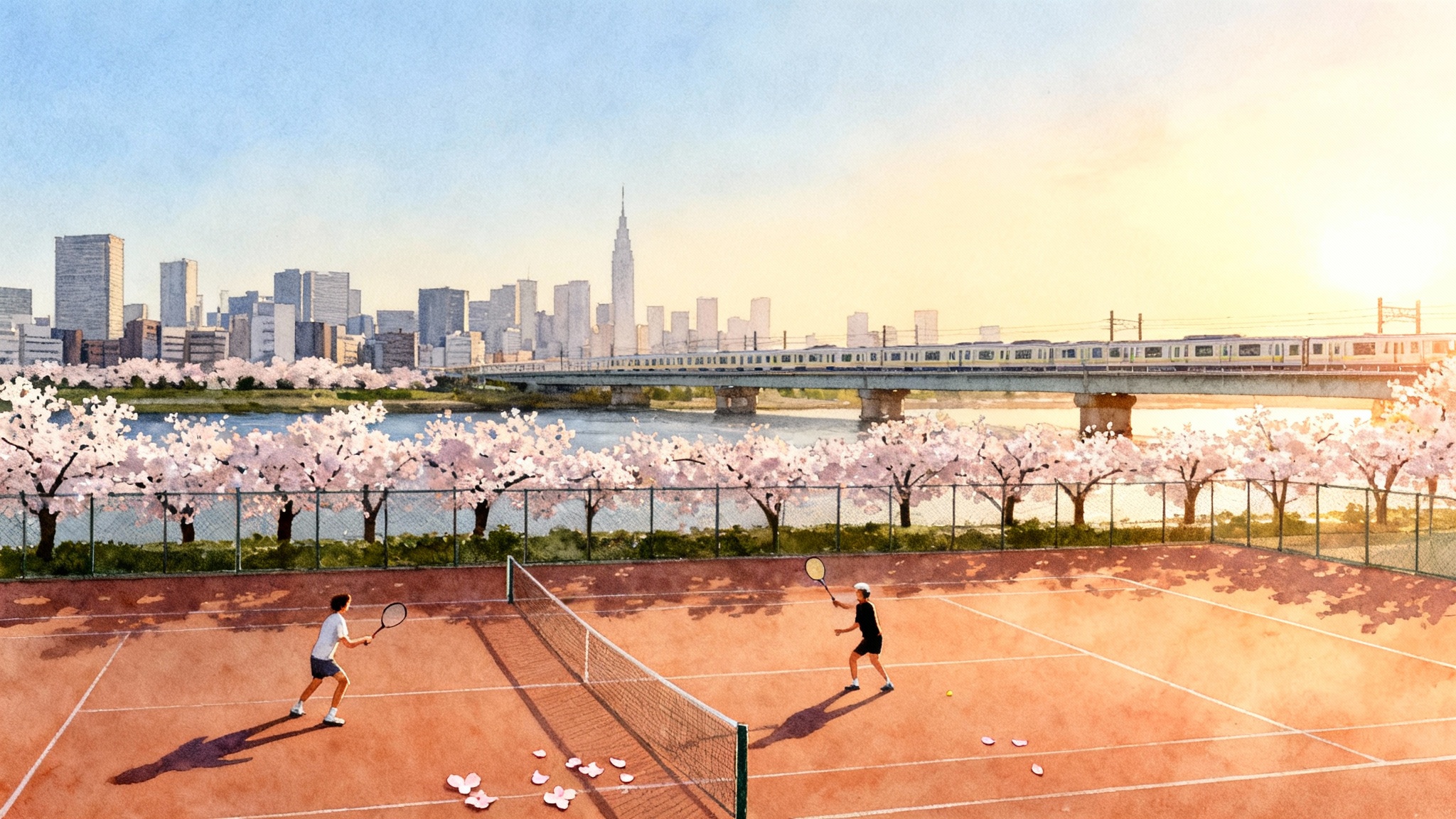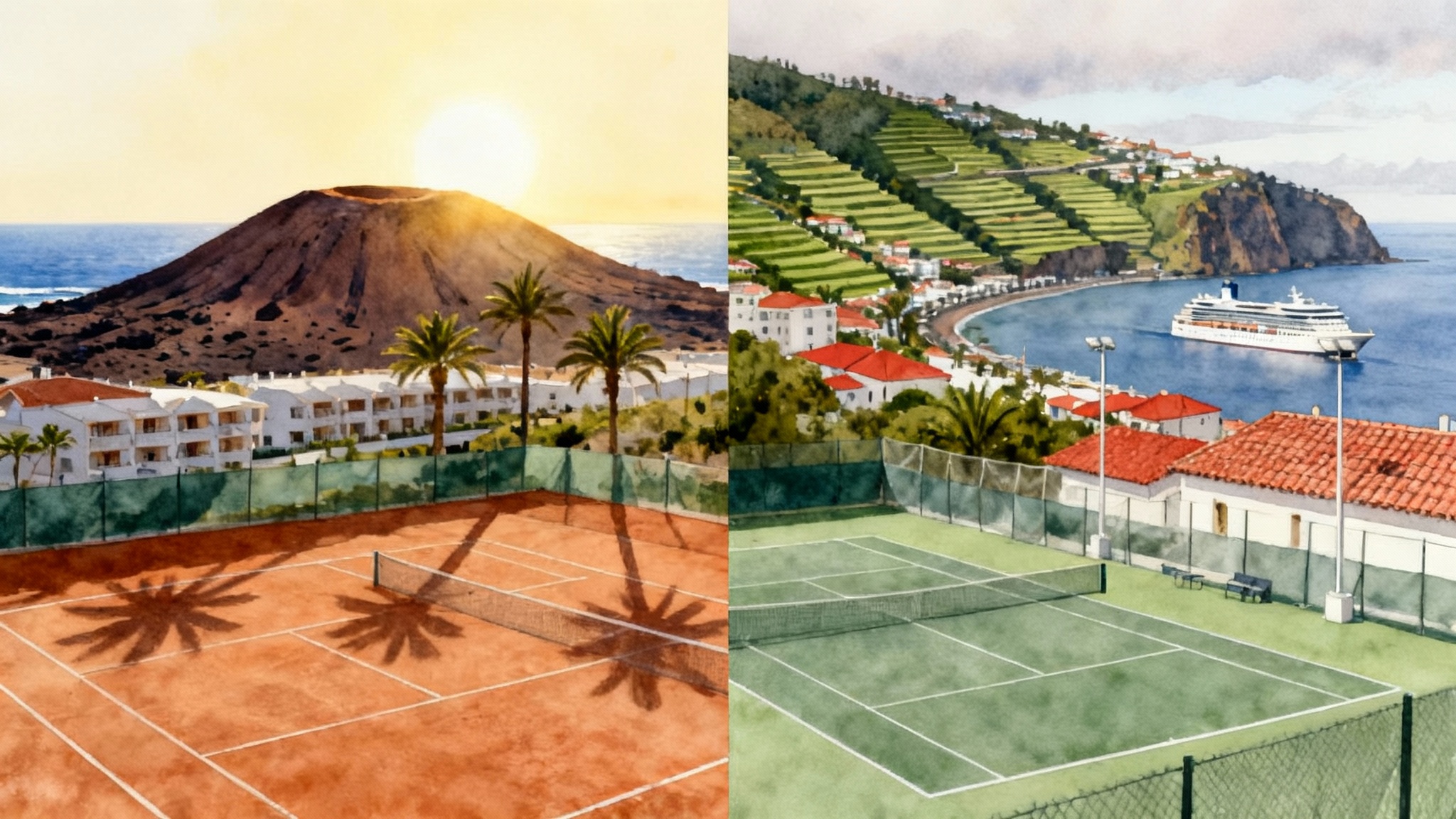Orlando 2025–26: The most practical U.S. tennis base
Plan a family tennis season that actually works. Orlando pairs a dry, mild November to April window with dense United States Tennis Association and Universal Tennis Rating events, easy flights, and resort downtime for all ages.

Why Orlando is the practical hub for year‑round tennis
If you want dependable court time, match reps for every level, and a destination your family will actually enjoy, Orlando is the most practical base in the United States for 2025–26. The city’s winter climate delivers long, dry training days from November through April. The USTA National Campus programs anchor a dense calendar of Universal Tennis Rating events, so you can stack competition without long drives. Orlando International Airport connects nonstop to major American cities, so teammates and relatives can pop in for a weekend. When the rackets go back in the bag, you have resort pools, theme parks, and easy dining that keep the whole group happy.
Think of Orlando as a well designed training complex that happens to be a city. Courts are the gym floor, tournaments are the scrimmages, and theme parks are the foam roller your non‑tennis family members secretly wanted. Your job is to place the right blocks of practice, match play, and recovery into the weather windows that reward you.
For comparison and backup plans, see our Indian Wells winter tennis guide and the Atlanta year-round tennis base.
The November to April weather window
Orlando’s competitive edge is not just warmth. It is the combination of mild temperatures, lower humidity, and much lower rainfall in late fall through early spring. That trio makes training consistent. Here is what that means in practical terms:
- November: Highs in the 70s Fahrenheit, lower humidity, and crisp mornings. It feels like tennis air. Courts dry quickly after the occasional front. Great month to ramp up volume and build a base.
- December: Cool mornings and pleasant afternoons. Plan longer technical blocks and serve work when the wind is light. Visitors combine tournaments with holiday trips, so book early.
- January: The coolest month, with some mornings that call for a light layer. Bounce is predictable, which helps players tune footwork patterns and contact points.
- February: A sweet spot. Comfortable afternoons, minimal rain, and enough daylight to double session. Ideal for pairing a tournament weekend with a midweek day‑academy block.
- March: Peak reliability. Warm without oppressive humidity. Families can split days between courts and spring break activities.
- April: Warmer but still manageable. Schedule hard sessions early, keep electrolyte plans tight, and use late afternoon for match play or drilling in shade.
Outside that window, Orlando is still playable, but you need a summer strategy. From May through September, heat and pop‑up thunderstorms become the rule. Train at sunrise, pause during the midafternoon storm cycle, and resume in the evening if lightning clears. October is a transition month that often looks like a drier, gentler version of late spring.
Use the USTA National Campus as your anchor
The United States Tennis Association National Campus in Lake Nona is the anchor of an Orlando tennis stay. It blends volume, variety, and organization in a way that simplifies planning. You can reserve courts, slot into adult or junior programming, and target tournaments with minimal guesswork. Treat the campus as your guaranteed‑quality training venue, then mix in academy days, neighborhoods with a different vibe, and evening match play around town.
Practical tips that make the campus work for you:
- Reserve ahead. Winter demand is strong. Book morning courts first, then fill in late afternoons once you know tournament times.
- Build a rhythm. Many players thrive with a pattern like two consecutive campus mornings, a day‑academy block the next day, then a lighter morning with recovery and an evening match.
- Vary surfaces and formats. Use a morning for footwork on hard courts, then book a doubles slot or point‑play clinic later in the week to keep competitive instincts sharp without overloading your legs.
Day‑academy blocks at Revolution Tennis Academy (Maitland)
Revolution Tennis Academy in Maitland is a useful north‑of‑downtown counterweight to the Lake Nona campus. A day block there changes the scenery and adds the repetition of a focused academy environment. The mix is valuable. Campus time can be your controlled laboratory for mechanics and patterns. A Revolution block becomes your sparring gym for live ball, situational points, and decision making under pace.
How to structure a productive academy day:
- Morning technical tune: thirty to forty minutes of serves and first‑ball plays so skill work does not get lost in the group energy.
- Midday academy session: two to three hours of live ball and pattern execution at speed.
- Afternoon off‑court: food, hydration, and a short nap. Skip the temptation to add more hitting. If you must move, take a light mobility circuit in the pool.
A seven‑day Orlando tennis itinerary for families
This sample plan balances training, competition, and fun. Adjust days and volumes to match your travel calendar and tournament draws.
- Day 1, Arrival and reset: Land before noon if possible. Check into a hotel or rental with a kitchen and a freezer for ice. Light evening hit of forty‑five minutes to shake off travel. Early dinner and lights out.
- Day 2, Campus build: Two‑hour morning court block at the National Campus. Work on tempo and depth first, then serve plus one. Afternoon recovery walk, easy pool time, and a fifteen‑minute band routine. Evening mixed doubles or a short point‑play clinic.
- Day 3, Academy day in Maitland: Morning serve and return rehearsal. Late morning to early afternoon academy block at Revolution. Finish with a big lunch, then do a guided stretch and contrast shower. Short family activity in the evening.
- Day 4, Tournament opener: Warm up early. Eat saltier foods at breakfast and keep fluids steady. After the match, do not chase more hitting. Ten minutes of light jogging, fifteen minutes of mobility, and a good dinner. If you lose early, book a late afternoon campus court for thirty minutes of specific fixes.
- Day 5, Theme‑park half day and micro session: Sleep in. Head to a park for three to four hours. Return to the room for a nap, then a sixty‑minute afternoon hit focusing on patterns you used or avoided during the tournament.
- Day 6, Second tournament day or UTR match play: If you are still in the draw, repeat the opener routine. If not, enter a Universal Tennis Rating flex match or a local round robin. Keep the off‑court routine identical so you can compare how your body responds.
- Day 7, De‑load and depart: Easy forty‑minute hit with serves and low‑intensity cross‑court patterns. Pack ice for the flight, eat a protein‑forward meal, and list three takeaways to work on in your next cycle.
This blueprint keeps high‑quality touches early in the day, protects evenings for fun, and threads recovery throughout. The particular mix of campus, Maitland, and match play is what creates momentum.
Month‑by‑month climate tips that protect your training
- November: Plan two‑a‑days twice per week. Use the cool mornings for volume and the late afternoon for point play. Carry a light layer for early starts.
- December: Wind can rise with passing fronts. Make those days serve and return clinics with targets and lower nets. You get better in wind by playing on purpose.
- January: The chilliest mornings, extend your dynamic warmup by five minutes and start rallies a step inside the baseline to find rhythm before you push back.
- February: This is green‑light season. Add a third competitive session if your legs tolerate it. Many families book a long weekend around Presidents Day to catch both tournament and park time.
- March: Hydration ramps up. Add a pinch of salt to breakfasts, keep a water bottle in hand while in line at attractions, and switch to lighter colored shirts for afternoon hits.
- April: Heat arrives by midday. Begin as early as courts allow. Use hats, sunglasses, and sunscreen with zinc oxide. Move tactical learning into video review at night instead of extra court time.
- May to June: Sunrise hits. Expect afternoon storms. Train six to nine in the morning, stop when thunder rumbles, and consider indoor strength or mobility in the late afternoon.
- July to September: Treat the heat index with respect. Shorten sets, track how many changeovers you sip, and accept that some days are for serves, returns, and tactical walk‑throughs rather than grinding.
- October: A quieter shoulder month. Ease back into longer afternoon sessions, and use the time to test new strings or grips before the winter block.
How to stack tournaments without burning out
Orlando’s density is an advantage only if you choose the right events. The goal is quality repetitions, not an endless loop of back‑to‑back draws.
- Pick one anchor event every ten to fourteen days. This could be a United States Tennis Association junior or adult tournament or a Universal Tennis Rating open. Enter that first.
- Add compatible match play. On the off weekend, schedule a flex match, a campus point‑play clinic, or a low‑stakes round robin. Avoid the temptation to enter two full bracket events in consecutive weeks unless you know your recovery runs hot.
- Respect entry timelines. Many United States Tennis Association events close entries about a week before matches start, and Universal Tennis Rating events often finalize entries midweek. Mark both in your calendar on arrival.
- Scout formats. Some events play two sets with a match tiebreak. Others are full best‑of‑three. Practice accordingly in the forty‑eight hours before the event.
- Defend recovery like it is practice. Ten minutes of light jog, ten minutes of mobility, and ice where you need it before dinner. You get to train tomorrow because you recovered tonight.
Logistics that save you time and energy
- Flights: Orlando International Airport has nonstop flights from most large American hubs. Aim to land before noon to bank a light hit on arrival day. For departures, avoid red‑eyes when possible so you do not lose the next day to fatigue.
- Car strategy: If you split time between Lake Nona and Maitland, a rental car simplifies life. Set your base for the week near the heavier block of your schedule. Many families choose Lake Nona for campus convenience for the first half of the trip, then slide north for a Maitland block and a different dining scene.
- Lodging: Look for kitchens, freezer space, and a quiet separate sleeping area for the player. Pools are underrated tools for recovery. A quick chest‑deep walk or five minutes of flutter kick after dinner can knock down leg heaviness.
- Courts outside the core: Resort and community courts around the metro area are plentiful. When you need a simple tune‑up, call ahead for public access hours and bring your own balls to avoid a store run.
- Food and hydration: Stock a case of water, electrolyte packets, bananas, and sandwiches from day one. Eat earlier on tournament days and pack a salty snack for changeovers.
- Lightning and rain plans: Summer storms arrive fast. Follow staff instructions, clear courts when thunder is audible, and do not try to out‑last a dark cloud. Use the delay for a snack, a towel change, and notes on what is working.
Recovery that keeps the trip fun
Recovery is not a luxury. It is the key to stringing together effective days without fraying focus or mood. Treat it as programming, not improvisation.
- Sleep: Protect an eight‑hour window. Put phones in another room. If your player wakes early, build a short pre‑dawn routine of mobility and band work before heading to courts.
- Cold and contrast: A pool, shower, and a bag of ice cubes can match fancy facilities when used daily. Two minutes cool water, one minute warm, repeated three times, followed by easy legs‑up on the wall for five minutes.
- Mobility routine: Ten moves, ten breaths each. Ankles, hips, thoracic spine, shoulders. The goal is not sweat. The goal is space in the joints so the next day’s footwork is clean.
- Mind and video: Keep technical reviews short and specific. Two clips of serves, two clips of forehands, one clip of a pattern you want to repeat. Watch them together before dinner, not at bedtime.
Budget and booking tips for 2025–26
- Book the winter block early. November through March fills first. Secure lodging and morning courts, then backfill with tournaments and academy days as draws publish.
- Use cancellation windows. Choose refundable rates on early bookings, then tighten plans as entries confirm. Protect the ability to slide a day if a draw time changes.
- Plan for stringing and shoes. Keep a spare reel or two sets of your go‑to string in your bag. Orlando humidity rises in spring and summer, and strings can shift feel. Shoes break down faster on hot weeks.
- Schedule maintenance. If you are in town for multiple weeks, pick a weekly off day. Visit a local sports chiropractor or massage therapist, rotate grips, and replace any frayed gear.
Putting it all together
The reason Orlando works is not one giant feature. It is the fit between climate, calendar, and convenience. You can place high‑value training in the dry, mild months. You can find match play for every level without long drives. You can move family members between parks, pools, and courts without stress. Build your trip around morning court time at the United States Tennis Association National Campus, add day blocks at Revolution Tennis Academy in Maitland to sharpen under pressure, sprinkle in evening match play, and defend recovery with the same intensity you bring to practice.
Do this, and Orlando stops being a vacation that includes tennis. It becomes the tennis base that includes a vacation. That is the most practical plan for 2025–26, and it turns a good idea into reliable progress.
